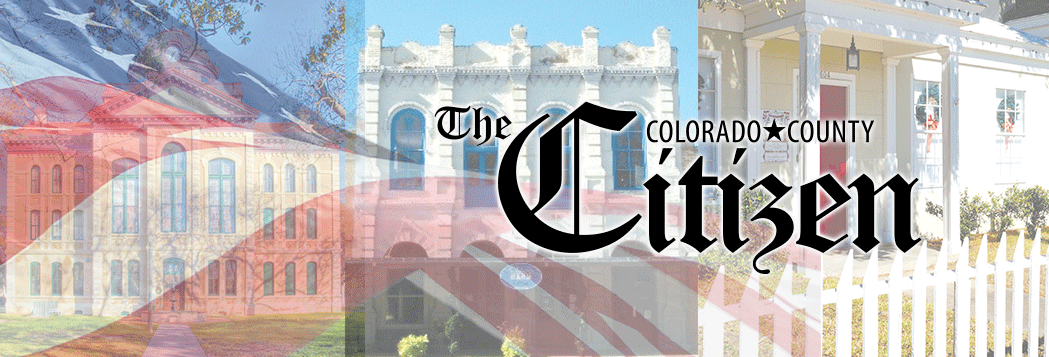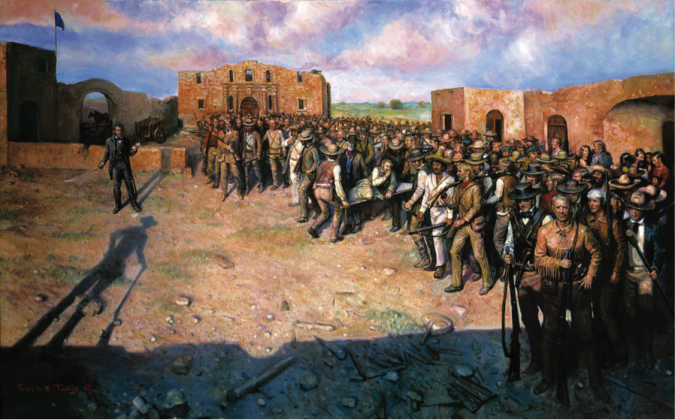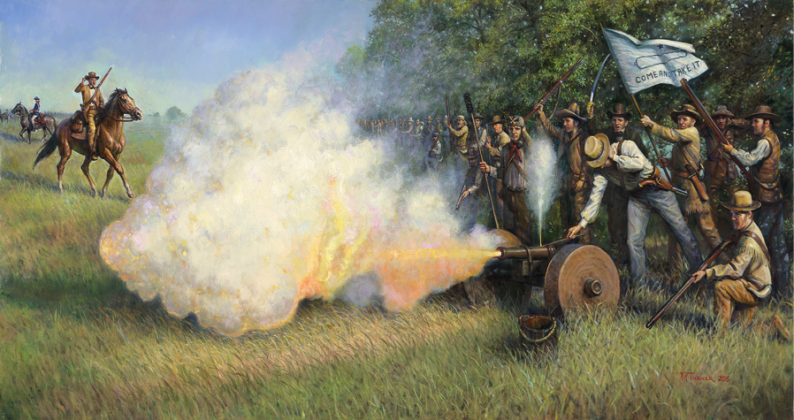March to Texas Independence
Editor’s Note: This is the first in a two-part series by special contributor Dr. Bob Lowe.
The month of March is as important to Texans as July is to Americans. The events leading up to and through March of 1836 created the environment for the declaration of an independent Republic of Texas, similar to the events that led to the American Declaration of Independence in July of 1776. Here is a brief summary of the origins of the hostilities that culminated in a full-blown revolution in March of 1836.
The settlement of Texas by Anglos from the United States began about 1821, under the direction of empresario, Stephen F. Austin, who had negotiated a contract with the Spanish government. Earlier attempts at settling Texas by Mexicans and Spaniards had failed. So, Spain decided to invite Americans in, to prevent claims by France, Britain, and other European nations, on its vast territory. Austin was empowered to settle 300 Anglo families and give each family a 1280 acre tract of land, on the condition that they become Catholic and Spanish citizens. Before the settlement began, however, Mexico declared and won independence from Spain. This muddied the political waters.
Between 1821 and 1835, the political climate in Mexico and her new state, Texas, fluctuated greatly. Residents of the new state, both Americans and Tejanos (residents of Mexican or Spanish decent), became very angry at the “taxation without representation” that progressively grew more unfair under the new President, Santa Anna, elected in 1833. His administration became more dictatorial by the year. By 1835, all of the residents of Texas, the Tejanos, the Anglos, and Stephen F. Austin, realized that a declaration of independence, and a revolution, was the only solution! At the same time, Santa Anna realized that unrest was in the air. In October of 1835, he sent a small army to confiscate the tiny canon that he had sent to settlers in Gonzales, to help protect themselves from hostile Indians. Armed “Texicans”, waving a flag with the banner “Come and Take It”, greeted his army. After a brief skirmish, the Mexicans retreated and returned to Santa Anna empty handed. Thus, begun the Revolution!
On Nov. 1, 1835, the Texicans held a consultation in San Felipe to discuss the potential revolution. As a result, Sam Houston was appointed commander-in-chief of a non-existent Texas Army. Houston urged the writing of a declaration of independence and a constitution. He directed James Bowie to retrieve artillery and destroy the Alamo. James Fannin was sent to Goliad to command an army of 400. By December, Santa Anna began collecting his troops and started a long march, northward to Texas to put down the rebellion. In the bitter cold winter, by mid February, Santa Anna arrived in San Antonio with 6000 men. Bowie disobeyed Houston’s orders and began defense of the Alamo.
At the end of February, the Texas Convention of 1836 convened at Washington on the Brazos. By March 2, the Declaration of Independence was written and signed on the 3rd and Houston pushed for the writing of a constitution and appointing of officers of the new government, as he left for Gonzales to meet with his armies. The convention learned of the siege of the Alamo and appointed David Burnet, president and Lorenzo de Zavala, vice president of the new government and finished writing the constitution.
On March 11, Sam Houston arrived at Gonzales where he met up with Deaf Smith, who had left the Alamo to seek reinforcements from Fannin, and Susannah Dickenson, who was spared by Santa Anna to bear witness to the fall of the Alamo. They informed Houston that Santa Anna now had as many as 6000 troops in Texas and that General Sesma was headed to Gonzales with part of the Army from the Alamo to find Houston. Houston sent word to Fannin to retreat to Victoria and wait for further orders. Unfortunately, Fannin was late in receiving the order and was overwhelmed and massacred by General Urrea’s Army.
News of these events quickly spread among the settlers and they panicked and began streaming toward the east and the safety of the American troops positioned at the Sabine River on the Louisiana side. Houston retreated with his Army to Bea-son’s Crossing, on the east side of the Colorado River, and remained there from March 18th, until March 26th, gathering his army. This was the beginning of the Runaway Scrape.
While at Beason’s Crossing, Houston learned of the massacre of Fannin’s men and watched the arrival of about 800 Mexican troops from San Antonio, under the command of General Sesma, gather on the west side of the Colorado River. Even though Houston’s ranks grew to as many as 1500, he realized that this was not the time or the place to make his stand against “The Napoleon of the West”. It would be April before the tide would turn.


